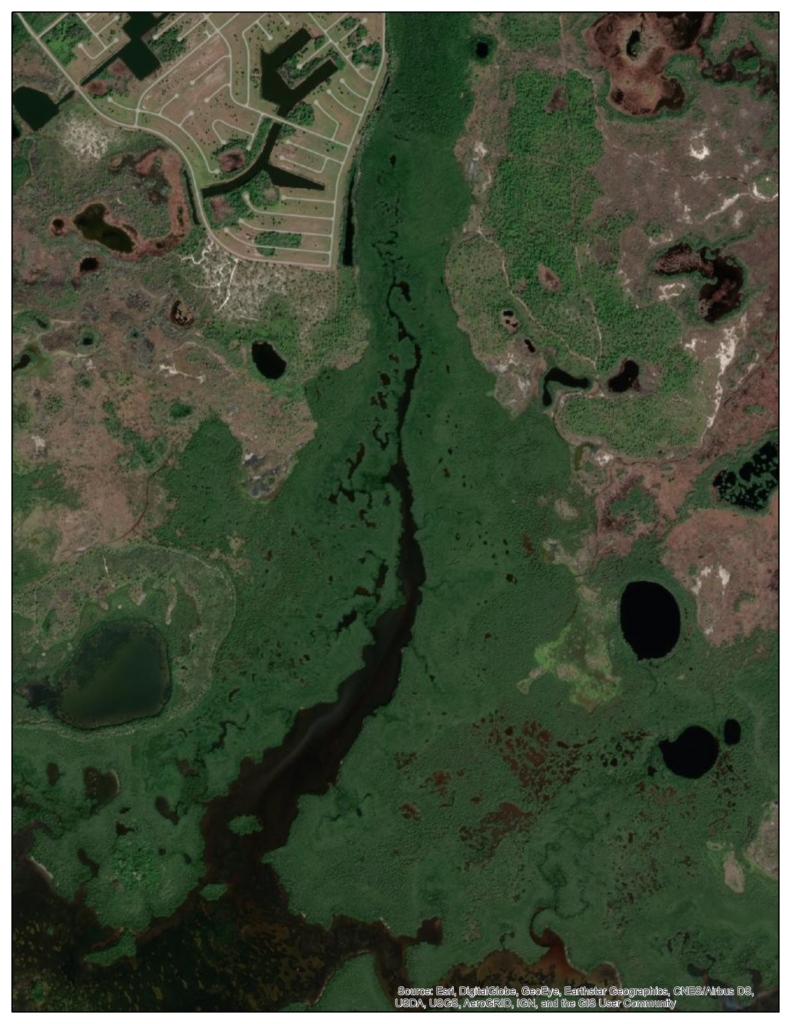A representative mangrove creek in the Charlotte Harbor estuary and a surrounding mosaic of coastal ponds, high marsh, and salt pannes, as well as ongoing residential development impacting these habitats. A seemingly natural creek is still vulnerable to hydrologic changes, nutrient runoff and habitat loss due to development.
BTT recently collaborated with Florida Fish and Wildlife Conservation Commission (FWC) to publish a manuscript titled, “A new approach to define an economically important fish as an umbrella flagship species to enhance collaborative stakeholder‑management agency habitat conservation.” Don’t let the title fool you, the message is simple – we can use fish to protect and conserve habitat.
The manuscript uses snook data to make a case for fisheries managers to protect habitats. BTT studies in Charlotte Harbor, FL from 2003-2007 were compared to FWC studies from 2017-2019 in the same areas to show that snook rely on mangrove tidal creeks and other back bay habitats in the estuaries as juveniles. Not only are these habitats vital for snook, but a plethora of other baitfish, sport fish, and crustaceans. Snook are what is known as an “umbrella species,” which is defined as a species whose conservation also benefits other species that share the same ecosystem.
Since snook are a beloved sport fish to recreational anglers (the recreational saltwater fishery generates more than $9 billion annually for the state of Florida), this manuscript also supports the theory that snook can be used as a ‘flagship species’ for mangrove creeks and other similar habitats. A flagship species in ecology refers to a charismatic, well-liked animal that is used to raise awareness for certain habitats. Some examples are the polar bear in the Arctic and the Panda in China whose populations are declining because their habitats are declining.
Currently, fisheries in Florida are managed using seasonal closures, bag limits and slot sizes which doesn’t address the main causes of fisheries decline: poor water quality and habitat loss and degradation. If we want to maintain healthy fisheries, we must maintain healthy habitats, which means protecting the natural habitats that are left, restoring degraded habitats effectively, and updating infrastructure that directly impacts our estuaries. These items need to be part of our state’s fisheries management plan.
By collaborating with FWC on manuscripts and other projects that promote habitat conservation, we are getting closer to the main goal of incorporating habitat in fisheries management.
To view the full text article click here. If you have any questions, email: info@bonefishtarpontrust.org.




